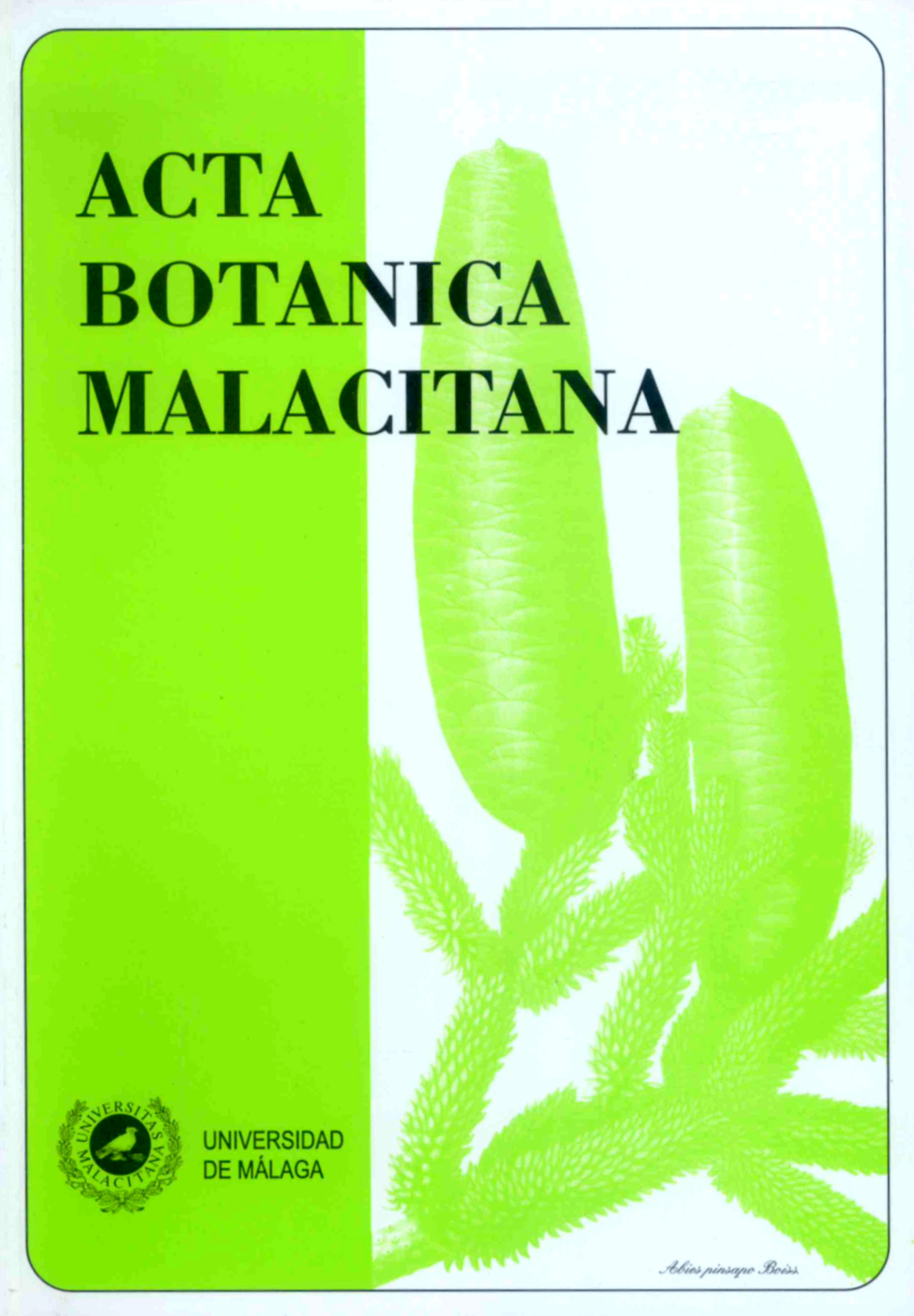A contribution to ex-situ conservation of Mediterranean thymes: Germination trials
DOI:
https://doi.org/10.24310/abm.v34i0.6885Abstract
ABSTRACT. A contribution to ex-situ conservation of Mediterranean thymes: Germination trials. The germination process was studied of the seeds of seven endemic or threatened Mediterranean thymes collected from natural populations of the SW Iberian Peninsula. Four replicates of 50 seeds of each population were induced to germinate by alternating temperatures (6 hours at 20°C, 18 hours at 30°C; 40-60% humidity). The accumulated percentage germination curves, the germinability (percentages), and the germination rate (in terms of the vigour index, Iv) were determined. The results were as follows: Thymus caespititius, germinabilities null or low and germination rates slow (0%-11%; Iv = 0-1.26); Thymus mastichina, germinabilities moderate or high and germination rates fast or very fast (59%-92%; Iv = 12.84-35.67); Thymus praecox subsp. penyalarensis, germinabilities high and germination rates fast (79%; Iv = 19.53); Th. pulegioides, germinabilities low or moderate and germination rates slow or medium (2%-41%; Iv = 0.33-7.58); Thymus villosus subsp. lusitanicus, germinabilities moderate and germination rates medium (35%; Iv = 9.00); Thymus zygis subsp. sylvestris, germinabilities low, moderate, or high and germination rates slow, medium, or fast (2%-68%; Iv = 0.52-19.36); and Thymbra capitata, germinabilities high and germination rates fast (92%; Iv = 19.07). There were both interspecific and interpopulational differences in germinative capacity. Cooling the seeds for 7 days at 10-12°C prior to sowing produced no significant alterations in the results. A relationship was observed between seed weight and germination percentage.
Key words. Germination, Iberian Peninsula, seed, Thymus, vigour.
RESUMEN. Contribución a la conservación ex-situ de los tomillos mediterráneos: ensayos de germinación. Se estudiaron los procesos de germinación de las semillas de siete tomillos endémicos o amenazados de la Región Mediterránea, recolectados en poblaciones silvestres del SO de la Península Ibérica. Se indujeron a germinar 4 réplicas de 50 semillas de cada población con alternancia de temperaturas (6 horas a 20oC, 18 horas a 30oC; humedad del 40-60%). Se determinaron curvas de porcentajes acumulados de germinación, germinabilidad (en porcentaje) y la velocidad de germinación (mediante el índice de vigor, Iv). Para Thymus caespititius las germinabilidades fueron nulas o bajas y la velocidad de germinación fue lenta (0%-11%; Iv = 0-1.26); Thymus mastichina, germinabilidades moderadas o altas y velocidades de germinación rápidas o muy rápidas (59%-92%; Iv = 12.84-35.67); Thymus praecox subsp. penyalarensis, germinabilidades altas y velocidades rápidas (79%; Iv = 19.53); Th. pulegioides, germinabilidades bajas o moderadas y velocidades lentas o medias (2%-41%; Iv = 0.33-7.58); Thymus villosus subsp. lusitanicus, germinabilidades moderadas y velocidades medias (35%; Iv = 9.00); Thymus zygis subsp. sylvestris, germinabilidades lentas, moderadas o altas y40J. Blanco Salas et al.
velocidades lentas, medianas o rápidas(2%-68%; Iv = 0.52-19.36); y Thymbra capitata, germinabilidades altas y velocidades rápidas (92%; Iv = 19.07). Se observaron diferencias interespecíficas e interpoblacionales en la capacidad germinativa. Un pretratamiento térmico (7 días a 10-12°C) no produjo alteración significativa en los resultados. También se observó relación entre el peso de las semillas y el porcentaje de germinación.
Palabras clave. Germinación, Península Ibérica, semilla, Thymus, vigor.
Downloads
Metrics
Downloads
Published
How to Cite
Issue
Section
License
All information related to the licensing of published works in Acta Botanica Malacitana and copyright can be found in our Editorial Policy.







1.png)
